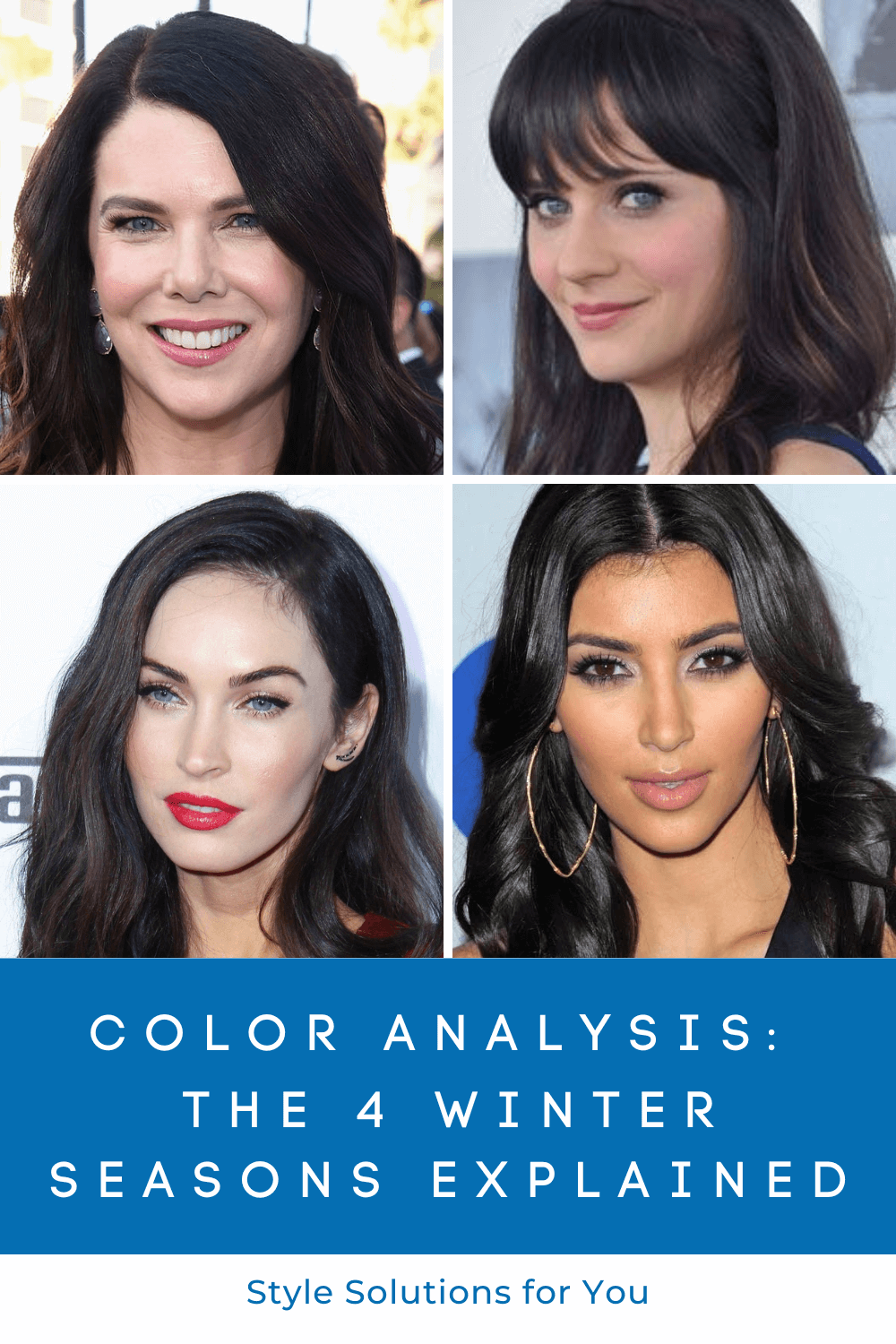
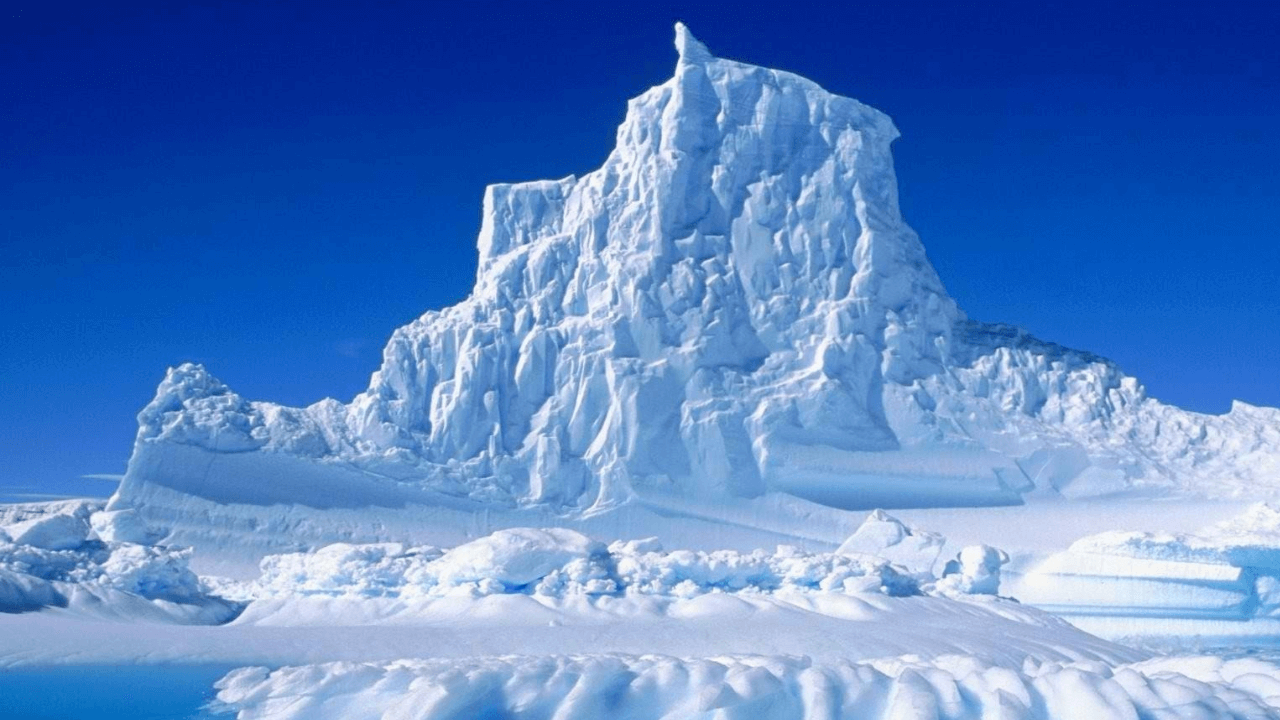
This is the last of my four-part series exploring the different 'types' of each season. You can read all about Springs, Summers and Autumns, now it?s time for the scoop on Winters.
Winter is a beautiful time of year with the sharp contrast of white snow, deep blue skies and deep evergreens. There is a coolness and starkness to the Winter colors with hues ranging from icy light colors to deep jewel tones.
These cool highly intense colors are represented in the Winter color seasons used in color analysis.
Seasonal color analysis is the process of matching your natural coloring to a set of colors called a color season that?s in harmony with you.
Once you determine your color season, you know with confidence the colors to wear to look your best.
Today let?s explore the Winter color seasons which are cool, clear and deep.
Are You a Winter?
Winters have a cool or neutral to slightly cool skin tone and can be very fair, olive, or dark. You may have a blue cast to your dark skin. Your eyes can be blue, green, hazel, or brown. Your hair color is usually cool and dark ranging from medium to jet black.
Winters do not have naturally light hair except for those with dark hair that has turned silver or white.
All Winters suit cool colors with strong intensity however, all Winters do not look alike since they can have different dominant color traits of cool, bright or deep.
True Winter, the original Winter season, along with Cool Winter, Bright Winter and Deep Winter are the 4 Winter season types in the 16-season method of seasonal color analysis.
Each of the Winter types has a unique color palette with variations of the traditional Winter colors to fit the dominant trait in their coloring.
The Four Winter Color Seasons
True Winter
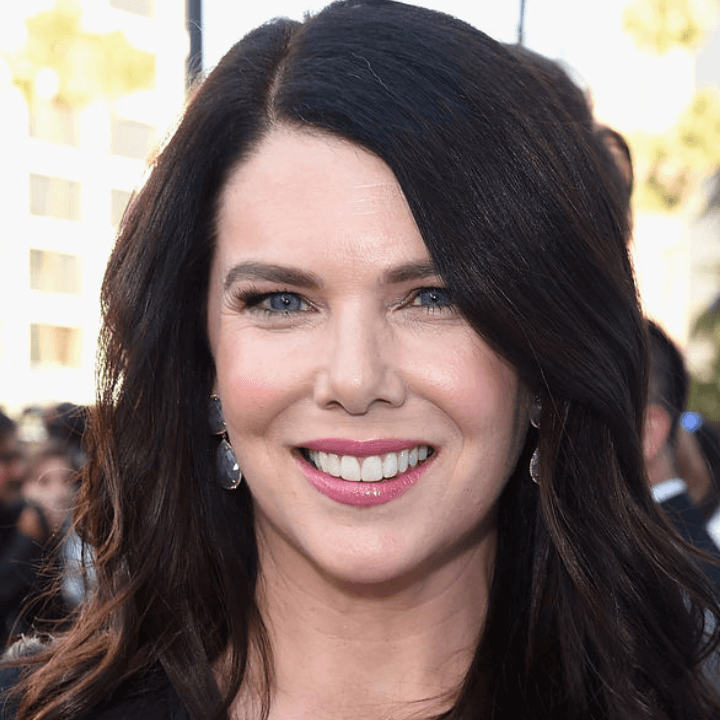
True Winter is the main Winter season. True Winter has traits that are cool, bright, and deep and often high contrast with very dark hair with fair skin or bright eyes. Each color dimension is balanced with no dominant dimension to your coloring.
The True Winter palette is blue based, cool, clear and saturated with a wide range of colors from icy light to very dark.
This palette is bold and beautiful with a mix of light, dark and bright colors including stark white, jet black and primary colors. Winter is the only season with black in their palette.
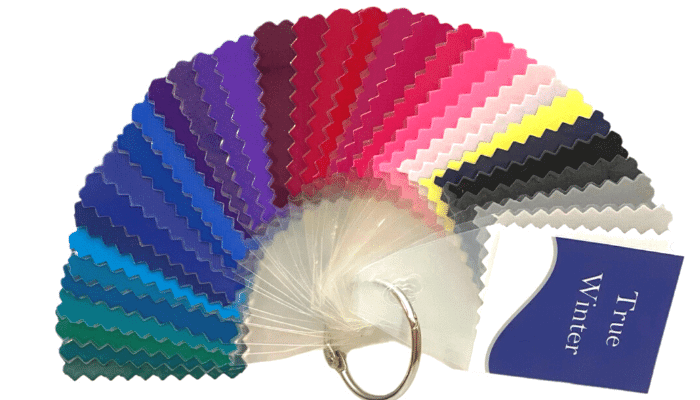
Neutrals include bright white, all shades of grey, pewter, charcoal, navy and black. Accent colors include lemon yellow, bright pinks, fuchsia, magenta, blue red, burgundy, blue greens, turquoise, and purples.
Not sure which Winter season suits you best, then stick to the classic True Winter colors which will be flattering.
Cool Winter
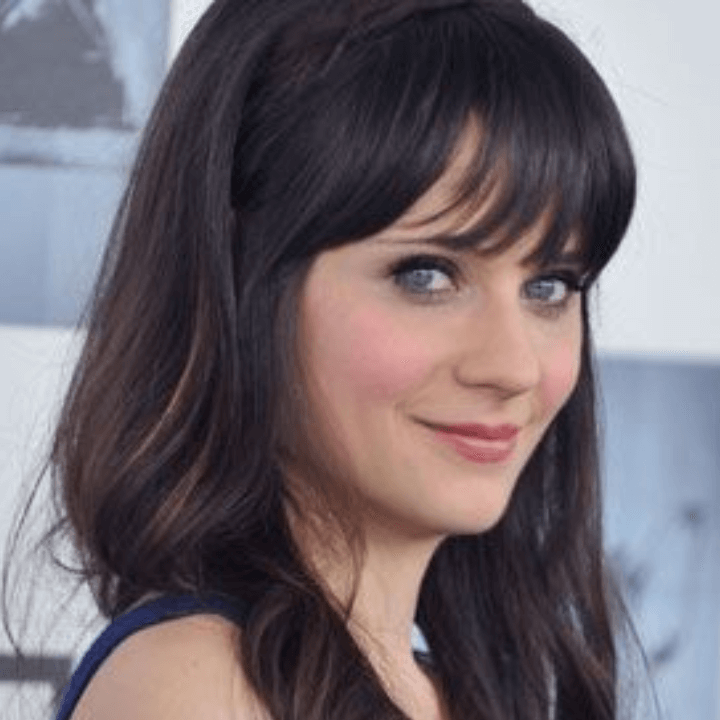
Cool Winter is the softest Winter season. It?s Winter with a touch of Summer that lightens and softens the brightness of the Winter colors.
A Cool Winter?s dominant trait is coolness. A Cool Winter will have cool skin that tends to be light and eyes of blue, grey or green. You have or had cool medium dark to dark hair. You?re a Winter with a touch of softness. Your coloring is not as intense and vivid as other Winters, but definitely brighter than a Summer.
If you feel that the True Winter colors are too intense when your hair turns silver or grey, try the Cool Winter colors. I covered this topic in how to adjust your season type.
The Cool Winter color palette is blue-based, cool, and moderately bright. This palette includes icy lights, pastels, mediums and darks. It?s a softer and less intense version of the True Winter colors.
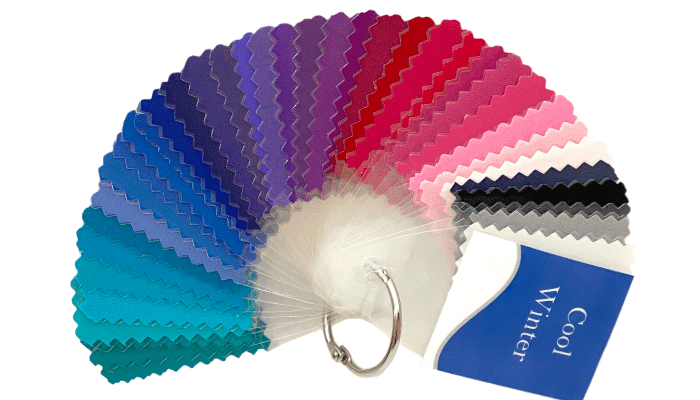
All the colors are cool, with no hint of warmth. Lightening the vivid Winter colors slightly reduces the saturation and brightness, which gives this palette more medium hues. A softer white, pale pink or light grey may be a better light neutral than stark white.
Neutrals include white, all shades of grey, pewter, charcoal, indigo, navy and black. Accent colors include lemon yellow, light to deep pinks, light magenta, rose, berry, true red, burgundy, purples, plums, blues, turquoise and cool greens.
Bright Winter
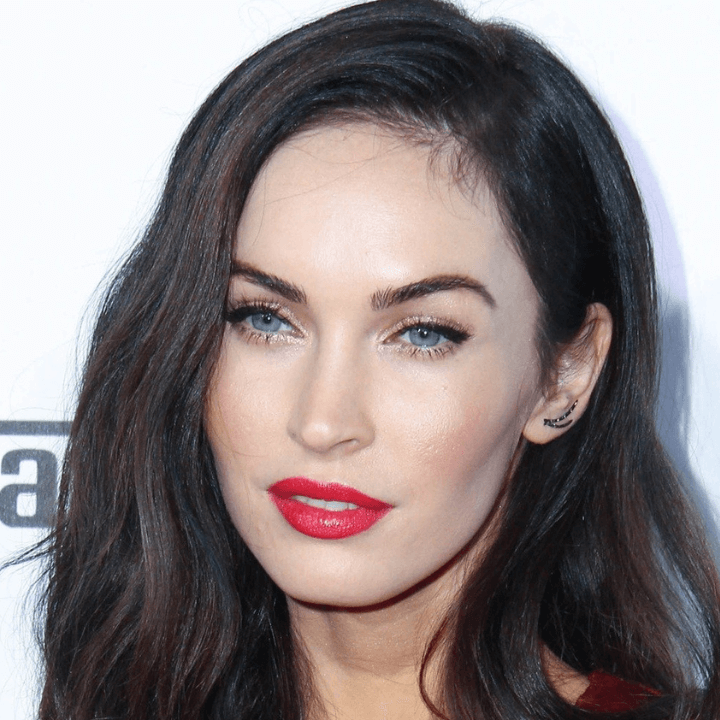
Bright Winter, also called a Clear Winter, is the brightest Winter season. It?s Winter with a touch of Spring that adds even more brightness to the Winter colors.
A Bright Winter?s dominant trait is brightness. A Bright Winter will often be very high contrast with a clear intense or deep eye color and very dark or black hair. You may look more neutral than a True Winter but cooler than a Spring.
The Bright Winter color palette is neutral to moderately cool, intense and bright, and ranges from icy light to dark. It?s an even brighter and more neutral variation of the True Winter colors.
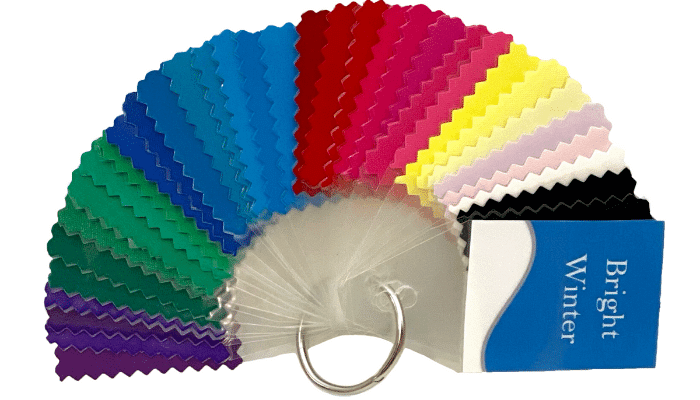
The colors have a touch of Spring's lightness to them, although they are still cool toned. You may be able to wear warmer colors than a typical Winter, and even some of the neutral bright Spring colors.
Neutrals include white, greys, pewter, charcoal, navy, brown-black and black. Accent colors include lemon yellows, bright yellows, bright warm pinks, corals, bright reds, turquoise, bright teal, blue greens, blues, and purples.
Deep Winter
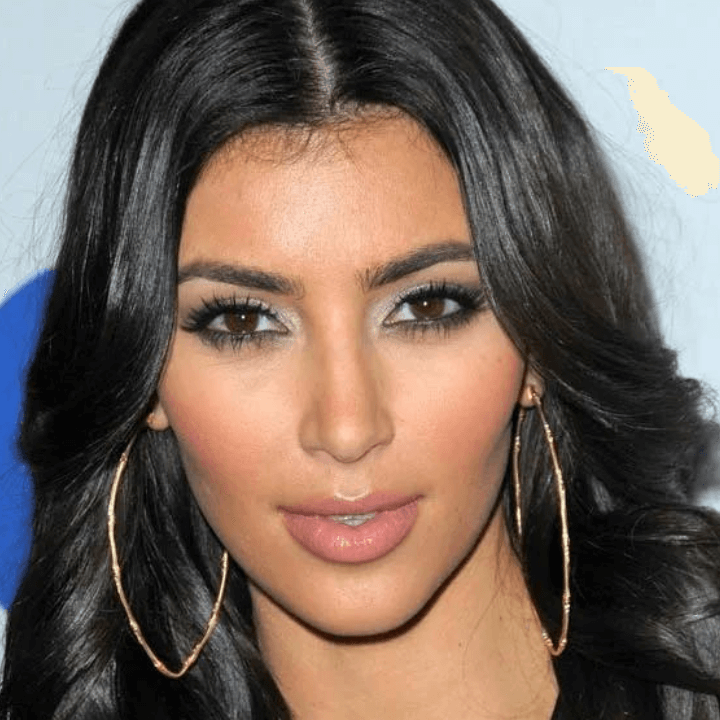
Deep Winter, also called Dark Winter, is the darkest and richest Winter color season. It?s Winter with a touch of Autumn that adds warmth and depth.
A Deep Winter?s dominant trait will be dark. You have dark eyes and dark hair. You may look very exotic.
A Deep Winter can be a tricky one to analyze because you may have characteristics from Autumn and Winter. You look warmer and darker than a True Winter, but still need cool Winter colors rather than Autumn's warmer colors.
The Deep Winter color palette is neutral to cool, clear or shaded, and primarily dark. It?s a darker and more neutral variation of the True Winter colors.
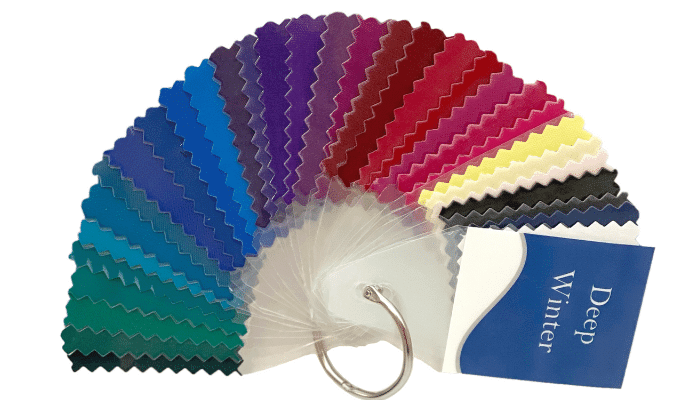
The colors lose some of the brightness of the typical Winter colors but gain more depth. This palette includes colors shaded with black that adds richness and darkness.
Neutrals include soft white, medium to dark greys, pewter, charcoal, dark chocolate, navy and black. Accent colors include deep rose, reds, burgundy, wine, teals, deep blues, dark greens, blue greens, plum, and deep purples.
Comparing the Winter Seasons
The Winter seasons are all cool and bright, but they look different.


Looking at Winter examples and their color palettes you can see the difference in the four Winter seasons and how the colors fit them.
Human coloring is diverse and your coloring is unique. Don?t worry if one of your features differs from the general descriptions, as you may still fit the color season.
Did I help you determine if you?re a Winter? If so, the Winter colors are cool, intense and beautiful just like you!
If you?re not sure if you?re a Winter, book a Virtual Color Analysis or download my Color Analysis Guide to learn more about the 16 color seasons to color analyze yourself.
Add Color to Your Wardrobe
Knowing your best colors is a great start, but without a color palette you?ll make mistakes.
But you don?t have to!
You need a color palette to get your colors right. I have Seasonal Color Palettes made of laminated fabric swatches with 45 beautiful seasonal colors for all the Winter seasons. They?re compact, durable and perfect for shopping and editing your wardrobe. My clients love them, and I know you will too.
And I have Digital Color Palettes available for the 16 color seasons.
Because I want everyone to discover their best colors, I have more posts about color and seasonal color analysis to help you.
Like this Article? Save It on Pinterest!
